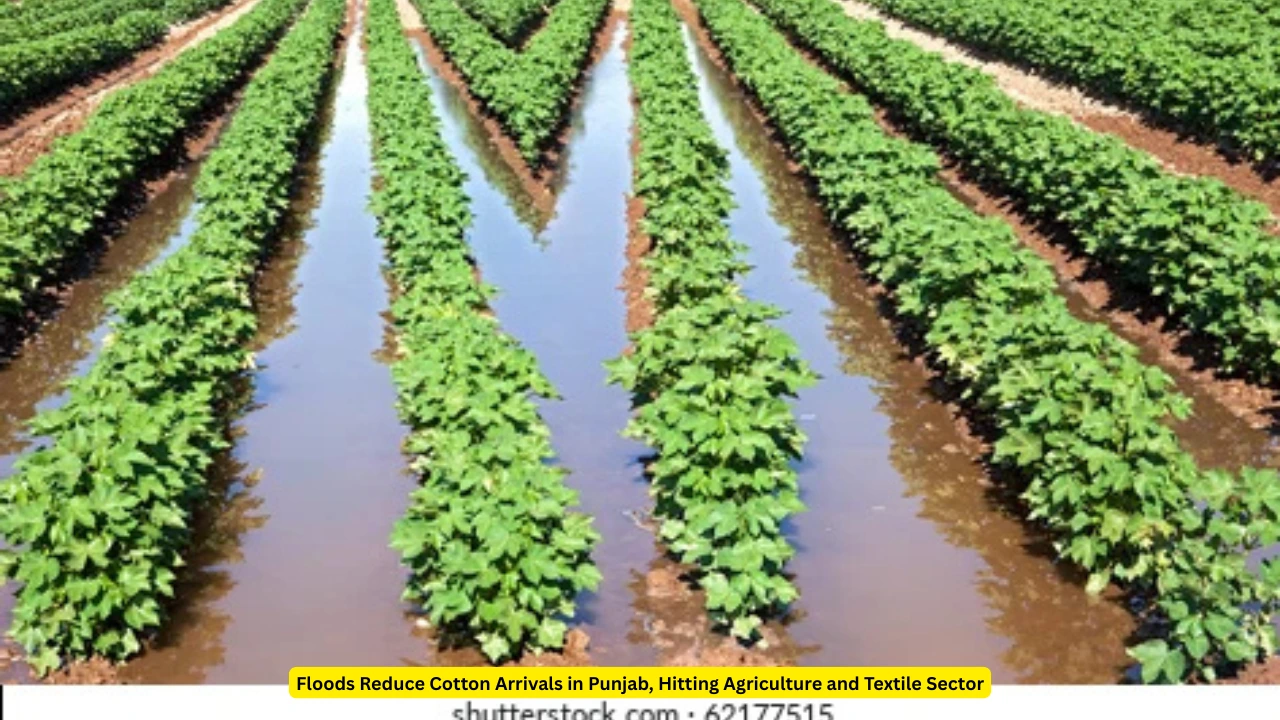Pakistan’s cotton sector is once again in the spotlight as new data reveals mixed trends in seed cotton arrivals across provinces. While overall arrivals are up compared to last year, Punjab’s cotton crop has suffered serious damage due to devastating floods, reducing its share in the national output. Sindh and Balochistan, however, are showing strong growth, making them the main drivers of Pakistan’s cotton economy in 2025.
Cotton Arrivals in 2025: National Overview
According to the latest data from the Pakistan Cotton Ginners Association (PCGA), seed cotton arrivals reached 2.004 million bales by September 15, 2025. This represents a 39.77% increase year-on-year (YoY) compared to 1.434 million bales during the same period last year.
The national figure looks promising at first glance, but a closer look shows sharp provincial disparities. While Sindh and Balochistan are recording robust gains, Punjab’s cotton arrivals are lagging behind due to the flood crisis.
Punjab’s Cotton Crop Hit by Floods
Punjab, traditionally the backbone of Pakistan’s cotton economy, has been badly hit by floods. Large areas of agricultural land were inundated, damaging standing crops, including cotton.
- Punjab’s cotton arrivals stood at 0.69 million bales, only a 28.14% YoY increase, which is far below Sindh’s growth rate.
- The province’s share in national cotton arrivals is shrinking, despite having more cultivated area than Sindh.
- Districts such as Vehari (0.113m bales), Bahawalnagar (0.102m bales), and Dera Ghazi Khan (0.094m bales) showed some growth, but many others, including Lodhran and Muzaffargarh, suffered steep shortfalls.
The flood damage in Punjab is now being seen as a major risk to Pakistan’s overall cotton economy.
Sindh Emerges as the Cotton Leader
Sindh has outperformed all provinces with 1.314 million bales of cotton arrivals, showing a massive 46.77% YoY increase.
- Districts like Sanghar (0.778m bales), Hyderabad (0.121m bales), and Mirpur Khas (0.108m bales) are leading the surge.
- Improved agricultural practices, favorable weather, and effective pest control are helping Sindh’s farmers achieve record numbers.
Sindh’s success has made it the leading cotton-producing province in 2025, significantly outperforming Punjab.
Balochistan’s Cotton Boom
Balochistan is showing the most impressive percentage growth. The province recorded 0.075 million bales, a 115.19% jump compared to last year.
This may be a small share in absolute terms, but the growth rate is an indicator of Balochistan’s emerging potential in Pakistan’s cotton industry.
District-Wise Cotton Performance
The district-level data highlights major differences:
- Punjab: Strong growth in Vehari and Bahawalnagar but shortfalls in Lodhran and Muzaffargarh.
- Sindh: Sanghar dominates with volumes larger than any single Punjab district.
- Balochistan: Cotton cultivation is expanding steadily, signaling long-term potential.
This disparity within and across provinces shows the uneven impact of floods, irrigation issues, and crop management practices.
Cotton Prices Under Pressure
Alongside production, cotton prices have also been under stress. According to official data for August 2025:
- Cotton prices ranged from Rs7,209 per 40kg in Hyderabad (Sindh) to Rs7,632 in Burewala (Punjab).
- Prices showed a 1.15% dip in Hyderabad and a 7.25% decline in Burewala.
- Overall, seed cotton, raw cotton, and cotton yarn prices declined compared to August 2024.
These falling prices, combined with flood damage in Punjab, add further challenges for farmers.
Challenges and the Way Forward
Pakistan’s cotton economy faces serious risks due to climate change, floods, and inconsistent policies. Experts suggest:
- Flood management and irrigation improvements to protect crops.
- Farmer incentives for better pest control and modern farming techniques.
- Diversifying cotton cultivation into provinces like Balochistan for long-term sustainability.
- Export competitiveness through value-added textile products.
If these measures are not taken, Pakistan risks becoming overly dependent on imports, hurting its textile exports and foreign reserves.If you read more about “CCP Targets Cartelization to Protect Farmers” click it.



2 thoughts on “Floods Reduce Cotton Arrivals in Punjab, Hitting Agriculture and Textile Sector”